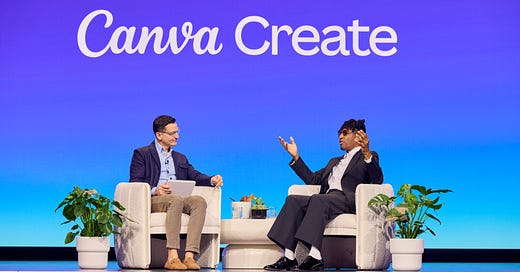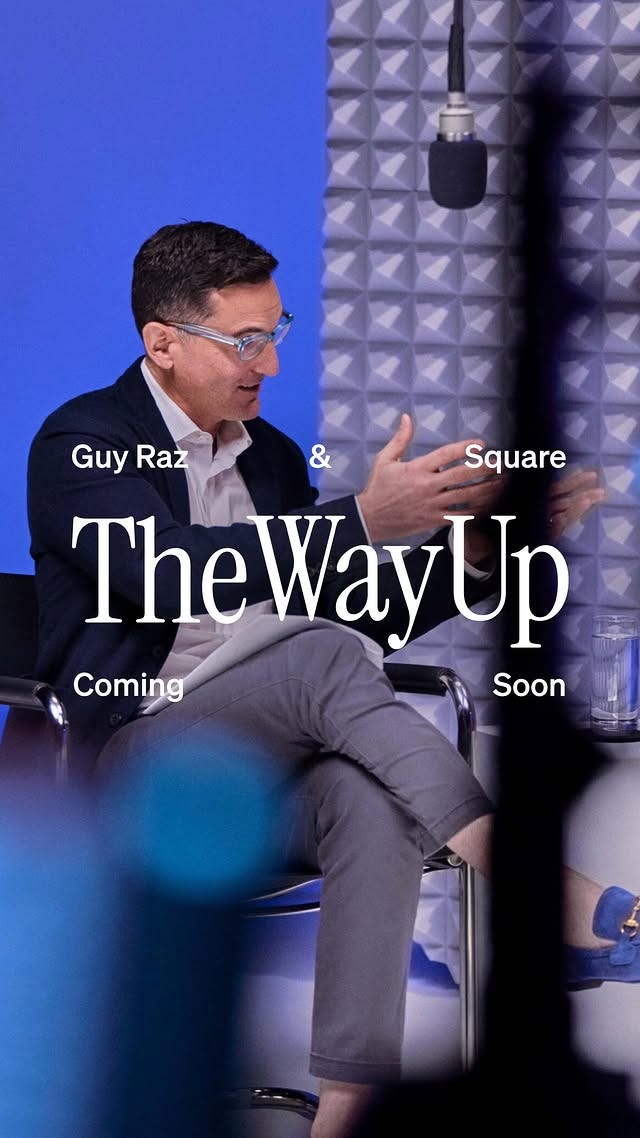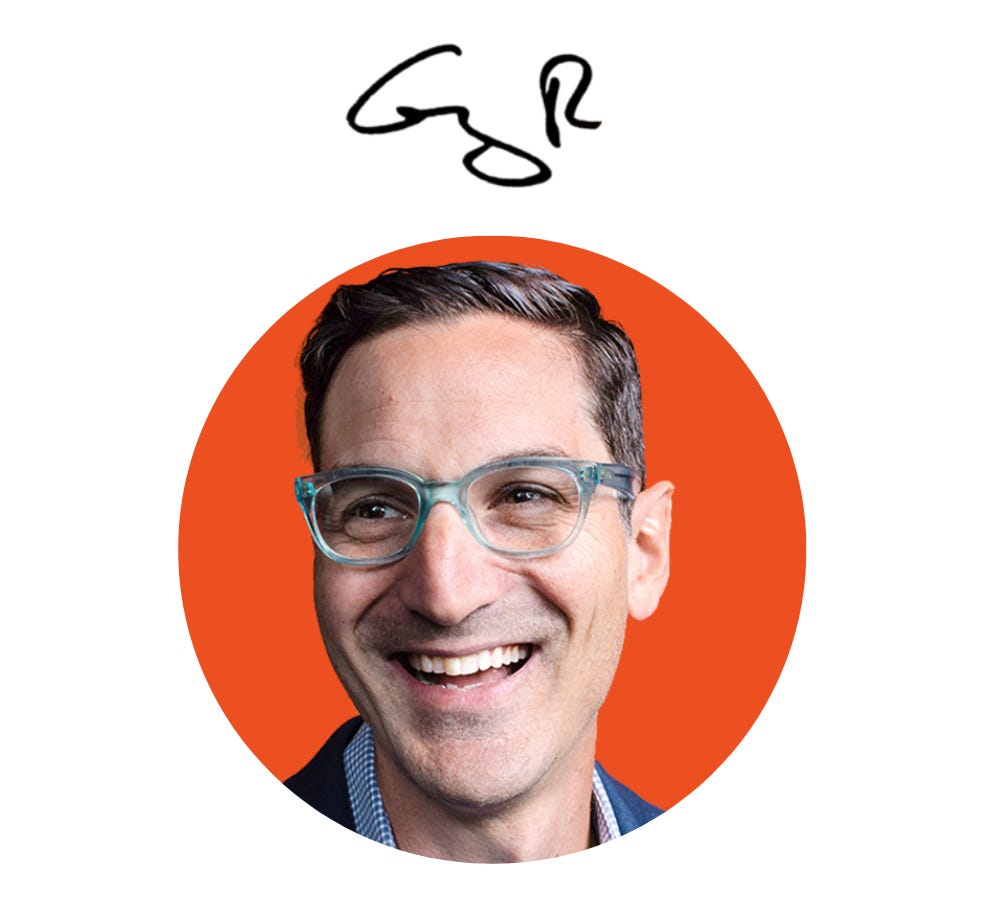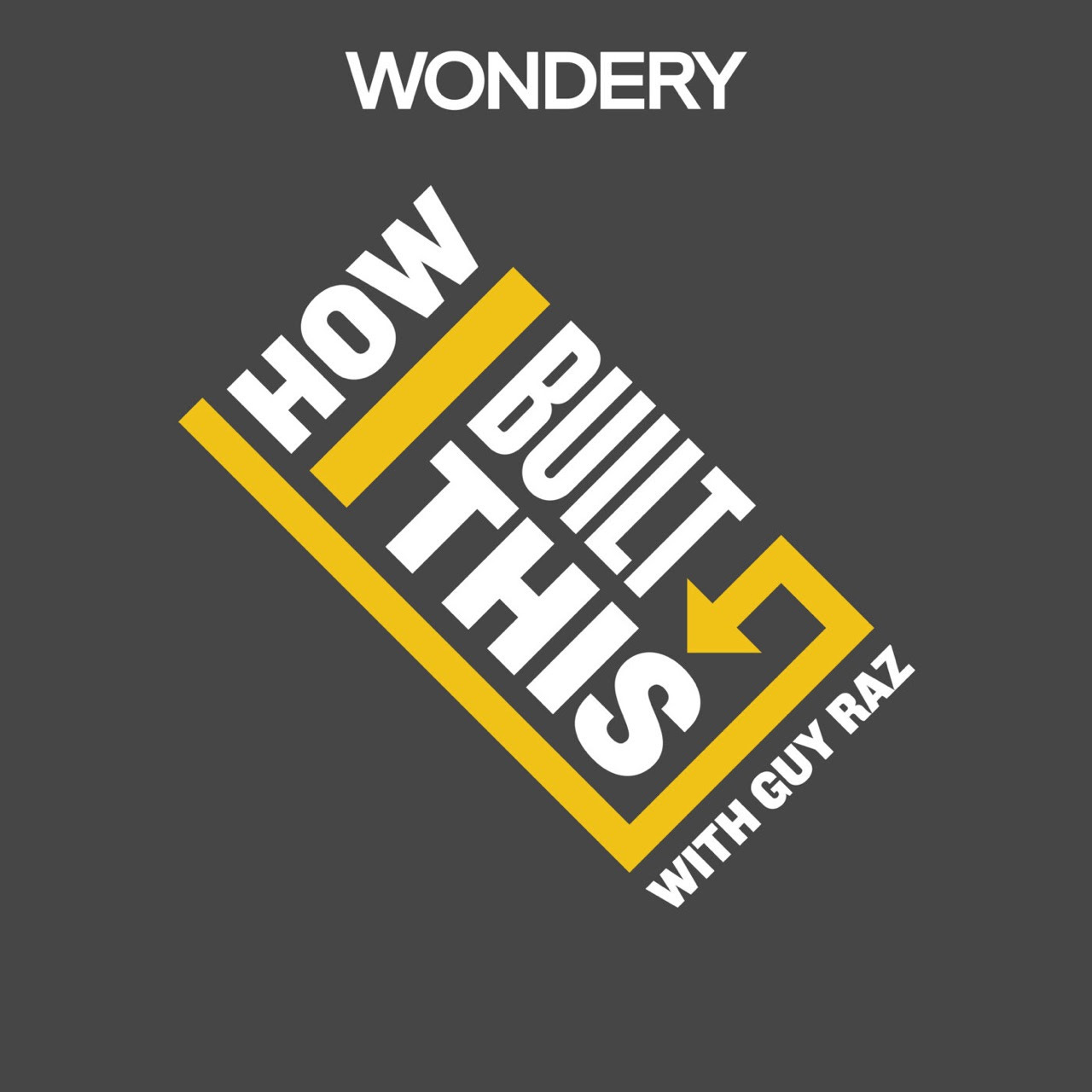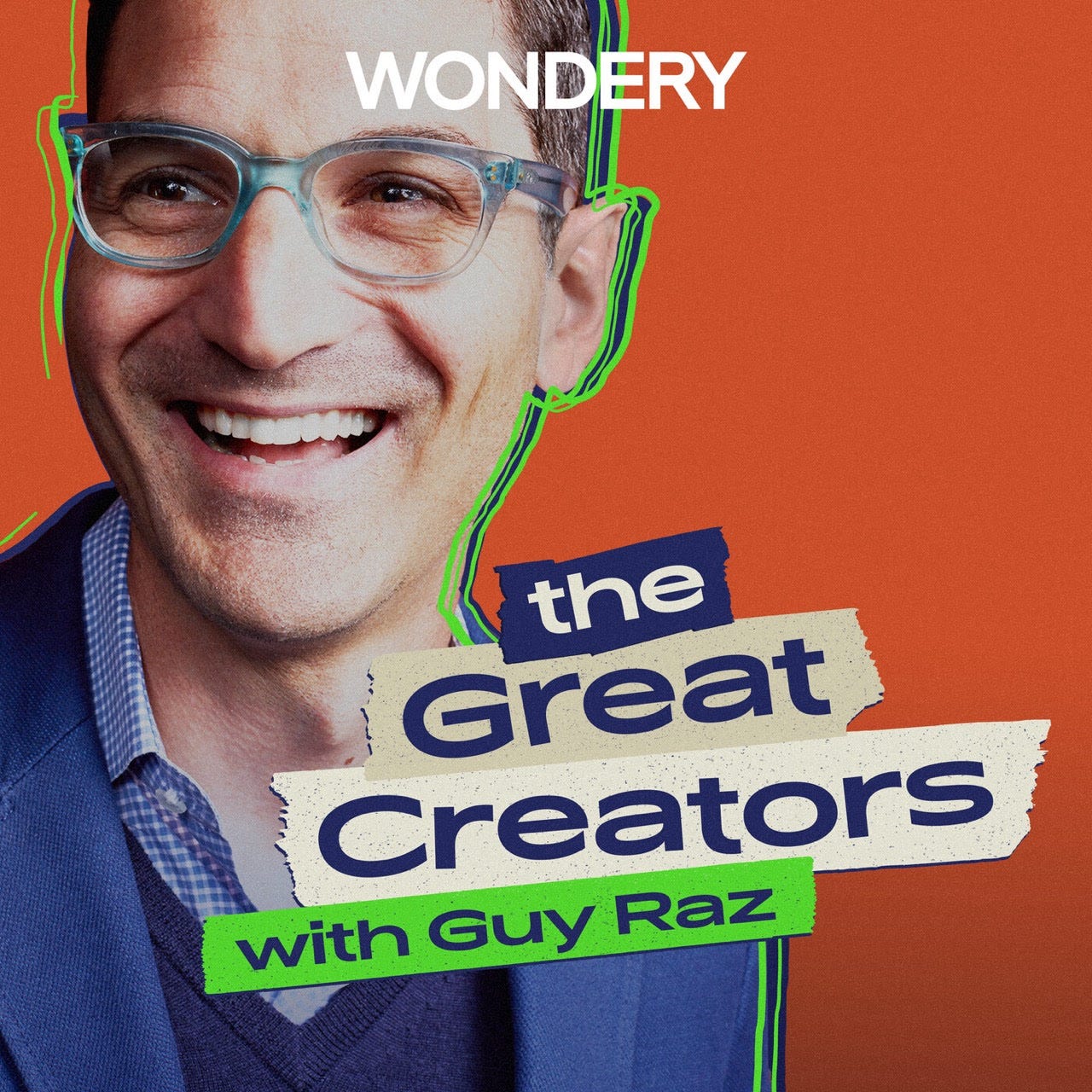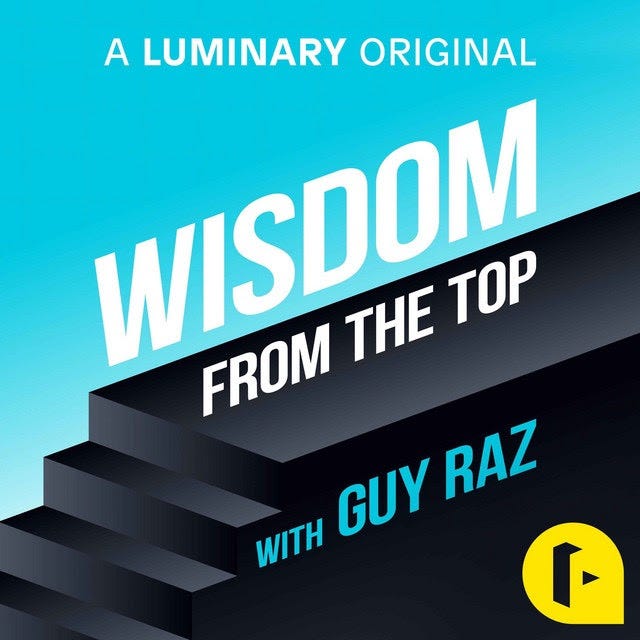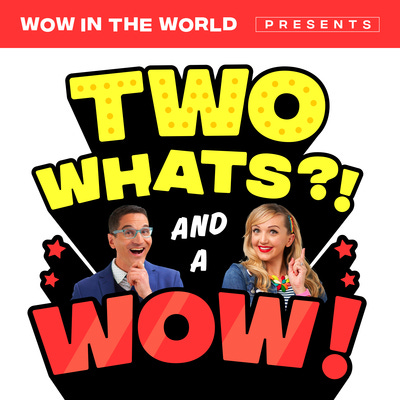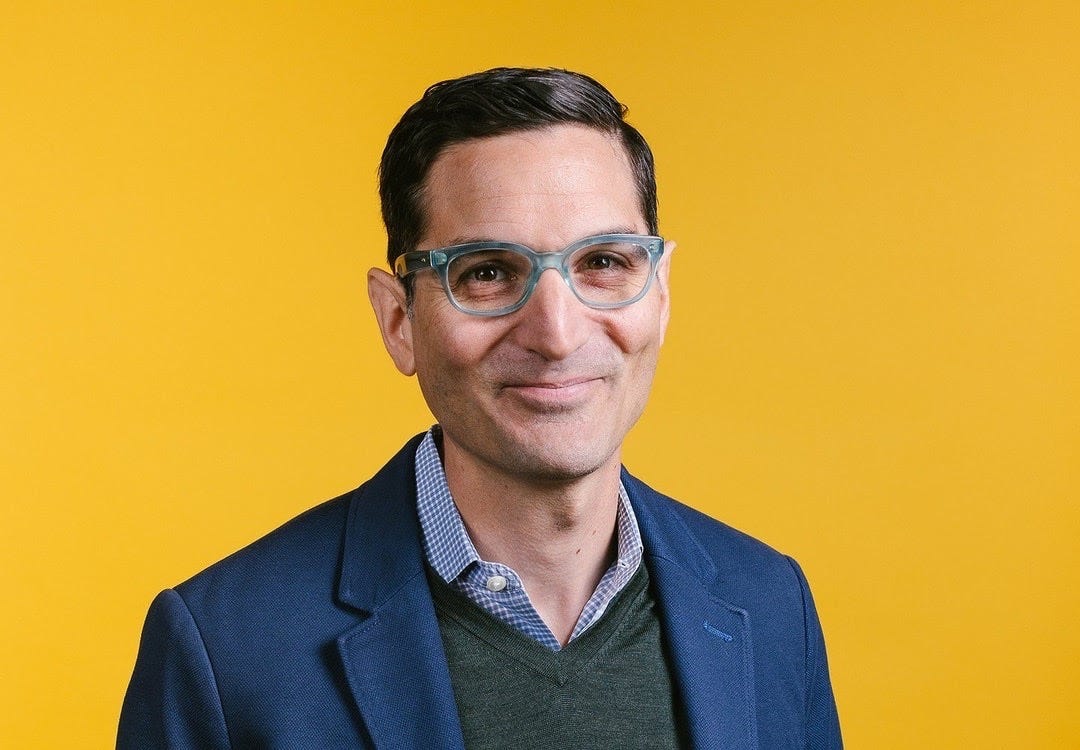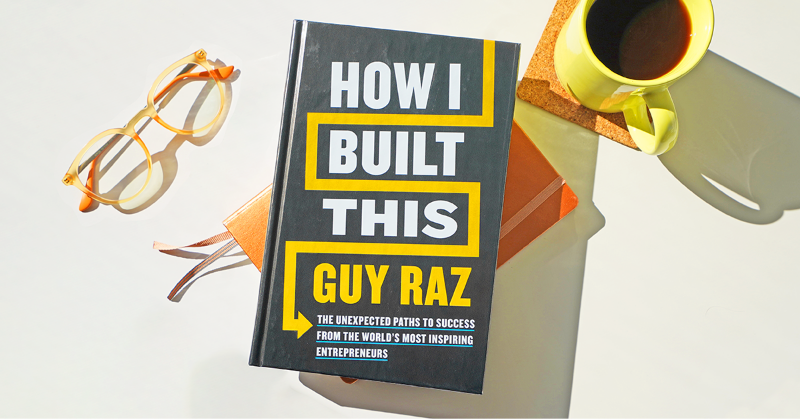What is creativity?
Is it innate? Learned? Even definable?
After years of wrestling with those questions, I’ve landed on a simple truth: creativity is a practice, and curiosity is the fuel. If you follow your curiosity far enough, it will lead you to fresh ideas, unexpected beauty, and new ways of seeing.
I was reminded of this last week while interviewing Jon Batiste at the Canva Create conference in Los Angeles.
If you’ve ever watched Jon perform, you know he embodies creativity—effortlessly improvising across genres and stacking up Grammys, an Emmy, and an Oscar.
Jon shared a formative story from his Juilliard days.
At 17, he lugged a melodica—a children’s toy—into New York subways and played for anyone who’d listen. Professors scoffed. But those experiments (and the ridicule that came with them) shaped the musician he is today.
As Jon put it, creativity begins by embracing your weirdness—leaping before the outcome is fully baked and accepting that mistakes are part of the recipe.
We also talked about self‑doubt. Jon feels it constantly. So does a novelist friend of mine who hits a crisis of confidence halfway through every book.
Yet neither lets doubt take the wheel; they use it as a forge. The work emerges stronger for having passed through the fire.
Creativity isn’t a gift reserved for a lucky few. It’s a daily choice to stay curious, take risks, and keep moving—hand in hand with uncertainty.
Is Muscle the Key to Longevity?
My friend, author Michael Joseph Gross, has just released a fascinating new book called “Stronger: The Untold Story of Muscle in Our Lives.” Michael spent nearly a decade examining the available research and data on muscle, providing an insightful meta-analysis.
His conclusion? Muscle is a matter of life and death.
It is one of the best predictors of well-being, and our decision to strengthen and maintain our muscles—especially as we age—has existential stakes.
You can watch my full interview with him on stage at the Commonwealth Club in San Francisco below:
One of the Most Beautiful Bars in America
I recently visited New York where I had a chance to see my friend Daniel Humm. (If you haven’t heard his story on How I Built This, it’s well-worth a listen.)
Anyway, Daniel and his incredible team at Eleven Madison Park recently opened an upstairs bar called Bar Clemente. It manages to be elegant, beautiful, cozy and unstuffy—all at the same time.
The space is dominated by two incredible murals by the Italian artist Francesco Clemente and all the Clemente artwork inside is original.
The food is also spectacular and the drinks are out-of-this world amazing!
I’m Launching a Cool Video Series with Square
Check out the trailer below for a new series called “The Way Up.”
It drops April 30!
Hitting Singles vs. Home Runs
There’s a lot of pressure in business to swing for the fences.
Raise a big round. Land a huge partnership. Go viral. Go public.
And yet, some of the most resilient businesses I’ve come across on How I Built This didn’t take that approach at all.
Last week’s episode with Missy Park, founder of Title Nine, is a perfect example.
As Missy puts it, “The story of Title Nine is a story of hitting singles.”
She didn’t try to build the company by chasing home runs. Instead, she focused on small, consistent wins (over and over again) for more than 30 years.
She never took outside funding, which meant no pressure from investors demanding a 10x return. That gave her the freedom to grow slowly, make lots of small mistakes, recover quickly, and stay focused on the things that mattered most to her: the customers, the culture, the team.
And it got me thinking...
What if more founders built their businesses this way?
Not by aiming for explosive growth, but by quietly chipping away, day after day.
Not by chasing headlines, but by deepening relationships with customers.
Not by rushing to scale, but by patiently building something that can actually last.
Of course, there’s nothing wrong with swinging big. Some businesses require it. Some founders thrive on it.
But I think Missy’s story is a good reminder that there’s another way.
Sometimes, the real magic of entrepreneurship is in the slow, steady accumulation of progress. The kind that barely moves the needle day to day, but adds up to something big over time.
So I’m curious…
Are you swinging for home runs right now? Or are you focused on hitting singles?
Should You Quit Your Day Job?
If you listen to this week’s HIBT Advice Line with my friend Andy Dunn (co-founder of Bonobos) you’ll hear an interesting moment:
One of our callers shares a business they’re building on the side, and Andy, without missing a beat, says:
“Quit your job. Resign tomorrow.”
Now, I should say… this is not usually the advice I give. In fact, it’s often the opposite.
I tend to tell people to wait.
Build up some runway, validate the business, create a little more security before you make the leap.
Because quitting your job? That’s one of the hardest and most personal decisions an entrepreneur will ever make!
And I’ve had enough of these conversations on How I Built This to know: there’s no universal answer.
For some founders, going all-in is the only way forward. Andy’s a great example. He left a safe, stable job to start Bonobos. And by going all-in, he was able to pour everything into the business. That intensity, that focus, probably made all the difference.
But for others, the path looks different.
Take Marcia Kilgore, the founder of Bliss. She started by giving facials in a tiny New York apartment. And she did this while holding down other jobs to pay the bills. Or Jim Koch of Sam Adams, who worked on his business after his day job, until he was confident enough to step away.
The truth is, there’s no one-size-fits-all answer here.
Some people leap. Some people build a bridge. Some take the risk early. Others wait until the timing feels right.
And honestly? If you only listen to the success stories, it might seem like the leap always works. But let’s not forget, there are thousands of stories we don’t hear. People who quit too early. People who leapt before they were ready.
So here’s what I want to know:
When do you go all-in?
Is it a gut instinct? A spreadsheet calculation? A conversation with a partner or mentor?
If you’ve made that leap, or if you’re thinking about it, I’d love to hear how you knew it was time.
Have an amazing week!
—Guy
On the Podcasts This Week!
Missy Park Played the Long Game (Title Nine)
Before Lululemon or Athleta, there was Title Nine.
In 1989, former college athlete Missy Park saw a gap: athletic gear that actually worked for women didn’t exist. So with no experience in apparel or retail, she launched Title Nine from her garage and mailed out 20,000 catalogs.
She got just 15 orders... but nearly all of them included one unexpected product.
That tiny insight sparked a decades-long journey of slow, sustainable growth. No outside investors, no blitzscaling, just consistent progress.
Missy bootstrapped her way through early setbacks, inventory disasters, and even a near-collapse during COVID. Through it all, she stayed true to her vision: to build a company that supported women.
Tune in to hear how staying small, staying scrappy, and staying in the game can still lead to big wins!
How William Wang Changed TVs Forever (Vizio)
In the early 2000s, flat-screen TVs were a luxury item. If you can believe it, they used to sell for upwards of $15,000!!
William Wang thought that was… absurd.
So he did what he does best: simplified the supply chain, cut out the middlemen, and drove the price down. Way down.
It wasn’t the first time William had played that game.
Years earlier, he built a booming computer monitor business using the same model… only to lose it all.. At one point, he was almost $25 million in debt.
Then he had a near-death experience you have to hear to believe. It changed him forever. And with a second chance, William launched Vizio.
It started with a consulting gig and a big bet on affordable TVs. And then came the turning point: building one of the first smart TVs in America.
This week, William shares how he went from rock bottom to a $2.3 billion exit. It’s a story you don’t want to miss!
HIBT Advice Line: Simplify, Focus, Repeat
Peter Rahal of RXBAR and now David Protein joined me on the Advice Line. Peter’s mantra? Keep it simple (and don’t let ego get in the way).
First up, Kristy: How do I scale beyond word of mouth?
Kristy launched Inner Wellth, a line of hormone-support supplements for women that hit $500K through organic growth. Now she’s eyeing digital ads, but Peter’s advice is simple: start small and stay profitable.
Next, Erik: Should I go all-in on DTC?
Erik runs SquatWedgiez, a fast-growing fitness accessories brand. He’s considering ditching Amazon because his margins are tight. Our advice? Use Amazon for volume and build a loyal community elsewhere.
Finally, April: How do I communicate the value of a premium product?
April founded Cheeky Cocktails to bring pro-level mixers to home bartenders. The quality is there—but the messaging needs clarity. Peter’s advice: simplify, niche down, and speak directly to your tribe.
Peter leaves us with one reminder: let go of ego, seek out hard feedback, and keep simplifying until your message sticks.
HIBT Advice Line: Know Who You Are
Andy Dunn, co-founder of Bonobos jumped onto the Advice Line with me! Andy has come a long way since Bonobos. He’s now focused on staying grounded, speaking plainly, and helping founders build without burning out.
First up, Michele: How do I grow my brand without losing its identity?
Michele launched Top Banana for Gen X women, but now wants to expand to younger shoppers. Andy’s advice? Don’t water it down. Instead, go all in on the premium positioning.
Next, Alek: How do I stand out in a crowded vodka market?
Alek’s company, Broda, makes vodka with raw honey, ginger, and lemon. It’s cleaner, smoother, and different. But most customers don’t think about what’s in their alcohol. We recommend re-positioning his product. And making sure bars and customers experience the why behind the brand.
Finally, Sabrina: Should I keep pushing DTC or focus on wholesale?
Sabrina’s Haus of Biscotti is stocked in 20+ stores, but online sales are slow. We have clear advice: skip DTC, double down on retail, and own the category.
Andy leaves us with one final note: Stop trying to be liked. Say what you think. Sleep well. And don’t confuse your business with your self-worth. That’s how you build for the long run.
If you would like to be featured on an upcoming episode, call and leave a 1-minute message at 1-800-433-1298 or send a voice memo to hibt@id.wondery.com
Cody Jinks on Building a Career Without a Record Deal
Before his songs went double platinum, Cody Jinks was fronting a thrash metal band, working as a forklift driver, and wondering if the music industry had room for someone like him.
In this episode, Cody shares how he went from $100K in debt to the #1 independent country artist in America (all without signing a label deal).
He talks about the years he and his wife spent scraping by, the moment he almost gave up, and the quiet decision that would change everything: to keep 100% ownership of his music, no matter the cost.
If you’ve ever wondered what it takes to stay true to your voice, and why it’s worth it, this one’s for you!
Watch it on YouTube:
Doug Conant: Turning Around Campbell’s, One Team at a Time
When Doug Conant took over as CEO of Campbell’s in 2001, the company was in steep decline. Its market value had been cut in half, and employee morale was at rock bottom.
Doug knew the turnaround wouldn’t be easy. In fact, it would likely get worse before it got better.
But with a self-taught leadership style rooted in empathy, accountability, and inclusion, he slowly rebuilt trust from the inside out.
He prioritized people. He wrote tens of thousands of handwritten notes to employees, listening closely, and making culture a strategic priority.
The result? A revitalized workforce and a company restored to health.
Science Podcasts for Kids!
Taste Buds on Your Toes?!
Mindy just scored a reservation at the hottest new restaurant in town: The Sea Robin.
But this isn’t your average dining experience… because here, you eat with your feet!
In this week’s Wow in the World, me and Mindy step (literally) into the world of the sea robin – a quirky fish with fins like wings, legs like a crab, and taste buds on its feet!
Why do they do it? What else in the animal kingdom can taste without a tongue? And will we ever recover from stepping in squid salad?
Tune in for this toe-tickling, tasty adventure on Wow in the World!
Landmark-Worthy WOWs!
Did you know the Great Wall of China was built with sticky rice? Or that the Eiffel Tower grows taller in the summer thanks to something called thermal expansion?
And here’s a towering truth: the Statue of Liberty used to be copper brown before turning green!
This week, we are globetrotting through WHATs and WOWs all about famous landmarks!
From the Archives!
RXBAR: Peter Rahal
In 2013, Peter Rahal spotted a gap in the fitness world: there were no snacks that aligned with its clean, paleo-focused values.
So he decided to make one himself.
Peter started experimenting in his parents’ kitchen in suburban Chicago. He mixed egg whites, nuts, and dates to create the first RXBAR. Their no-nonsense packaging and ingredient transparency struck a chord with health-conscious consumers, and the business quickly took off.
By 2016, RXBAR had hit $36 million in sales. And just a year later, they sold the company to Kellogg’s for $600 million.
Bonobos: Andy Dunn
While in business school, Andy Dunn teamed up with his housemate Brian Spaly to solve a common problem: men’s pants that didn’t fit quite right.
Brian had designed a better-fitting pair of trousers: tailored, stylish, and comfortable in all the right places. Together, they launched Bonobos, an online-first menswear brand that quickly stood out for its signature fit and customer-friendly e-commerce experience.
But behind the scenes, things weren’t so smooth.
Andy faced a series of personal and professional challenges, including a painful split with his co-founder and a battle with depression. Still, he pushed through the turmoil to lead Bonobos to national recognition.
See you next time!
What do you want more or less of?
Just send a tweet to @guyraz or a message on IG to @guy.raz or LinkedIn and put #GuyRazNewsletter at the end so I can find it.

